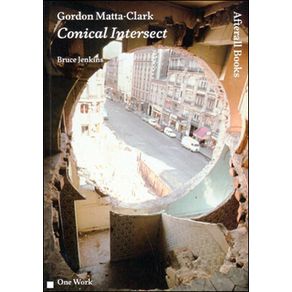Gordon Matta-Clark's Conical Intersect (1975) was a torqued, spiraling "cut" into two derelict seventeenth-century Paris buildings adjacent to the construction site of the controversial Centre Pompidou. With this landmark work of "anarchtecture," Matta-Clark not only opened up these venerable residences to light and air, he also began a dialogue about the nature of urban development and the public role of art. Considered three and a half decades later, Conical Intersect reveals the multivalent nature of the artist's practice and his prescient focus on sustainability and creative reuse of the built environment. Conical Intersect and the two buildings were demolished as part of a large-scale urban renovation of the historic market district of Les Halles; today we can know the work only from drawings, photographs, and a short Super 8 film. In this illustrated study, Bruce Jenkins examines Matta-Clark's "non-u-ment," looking closely at the artist's proposals, working process, various forms of documentation, and the dialogue begun by Matta-Clark's decision to transform two abandoned buildings "into an act of communication."



